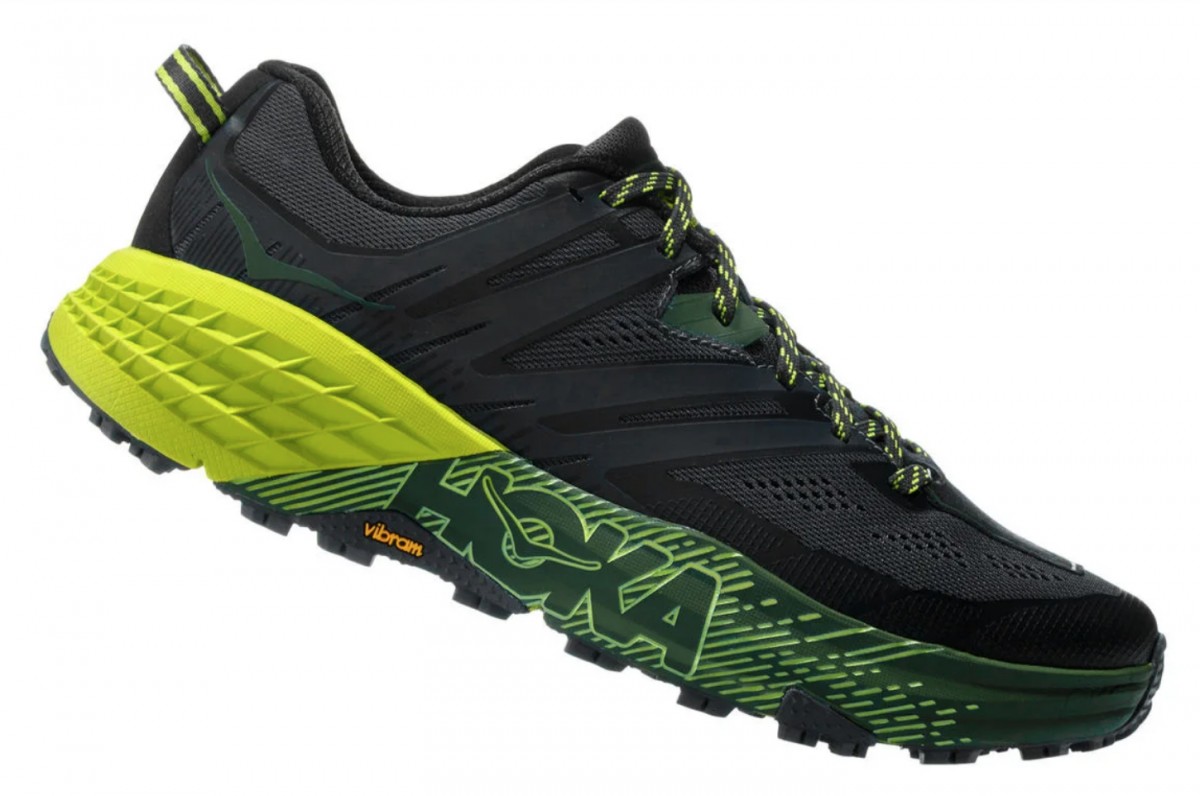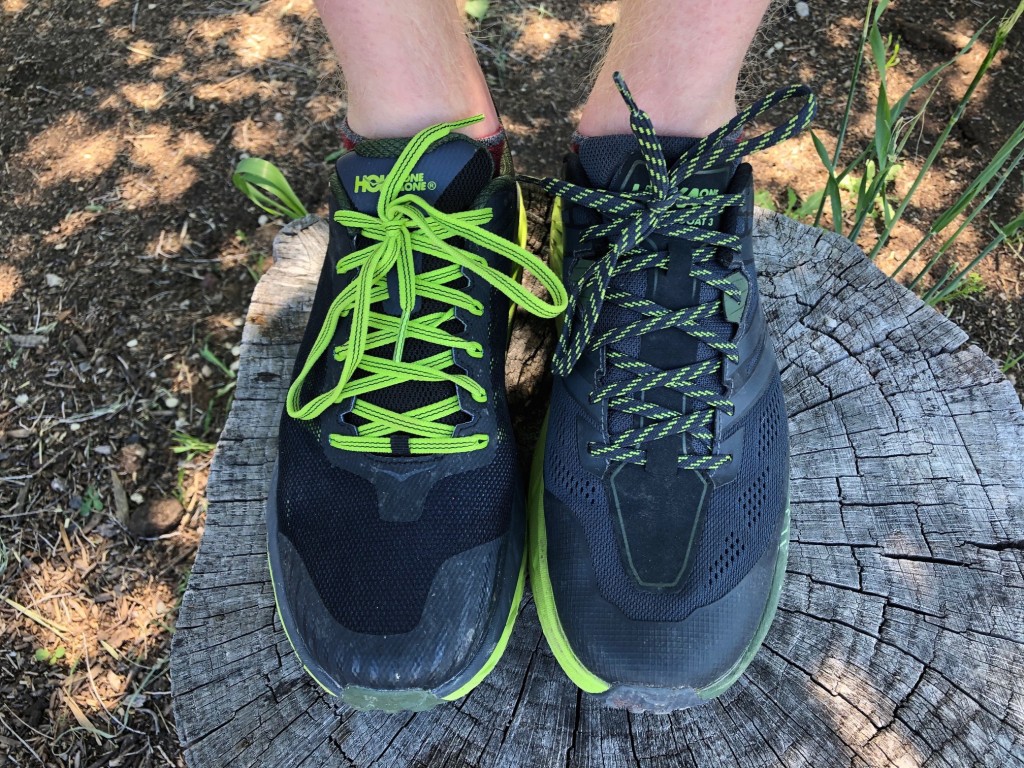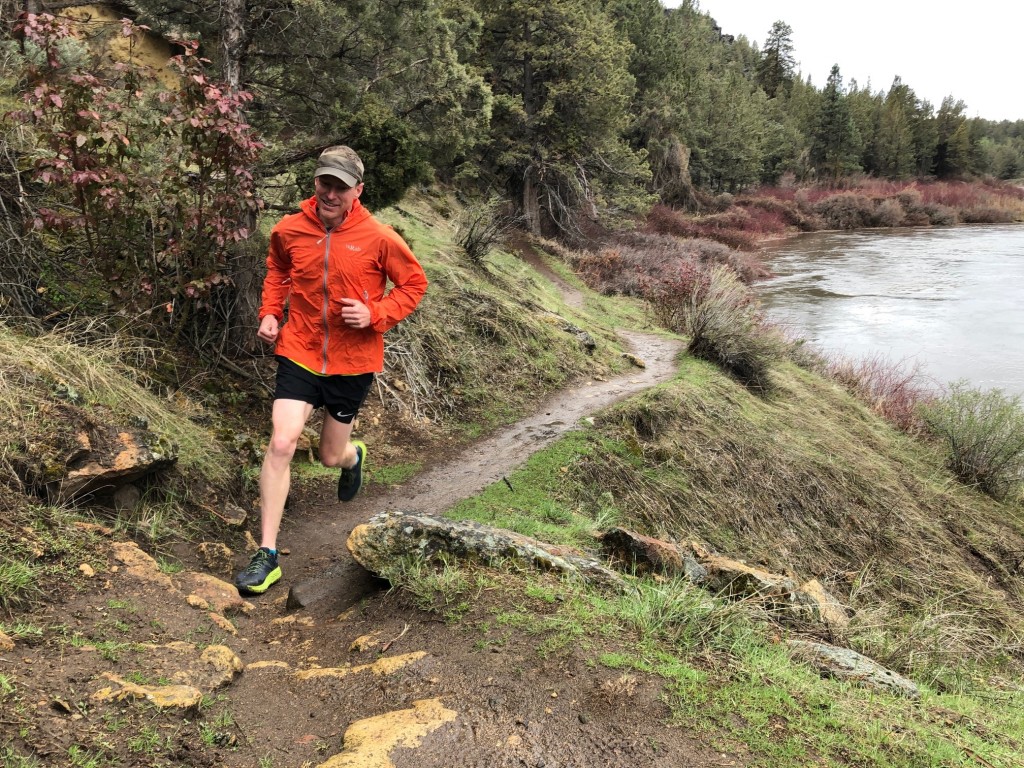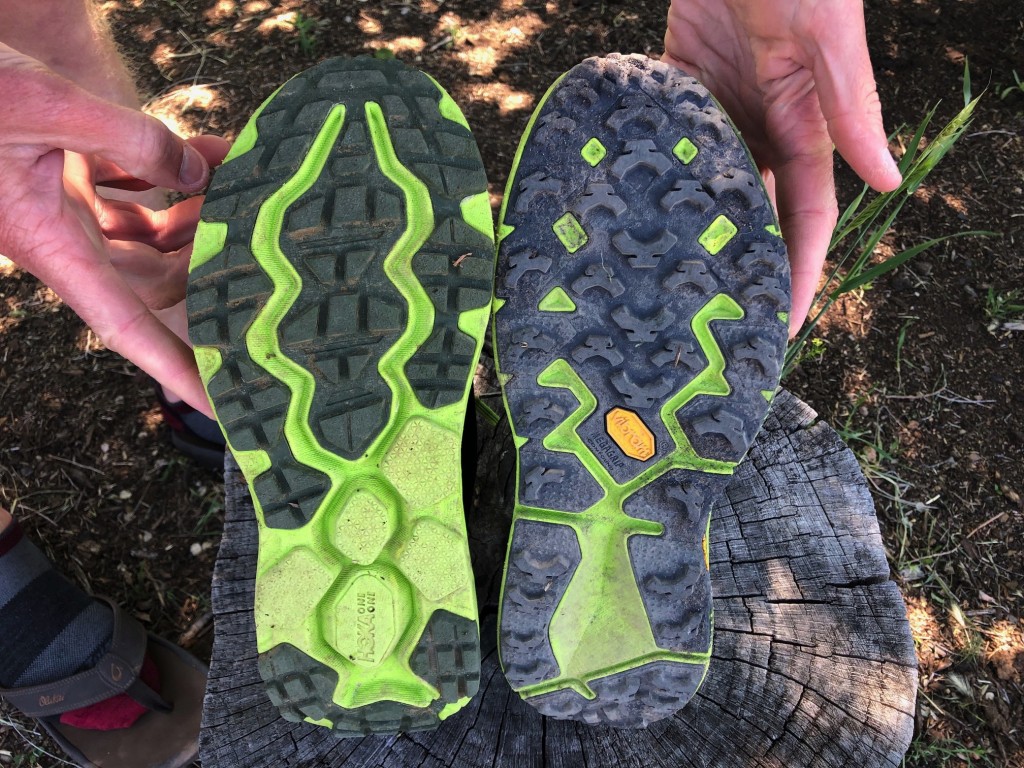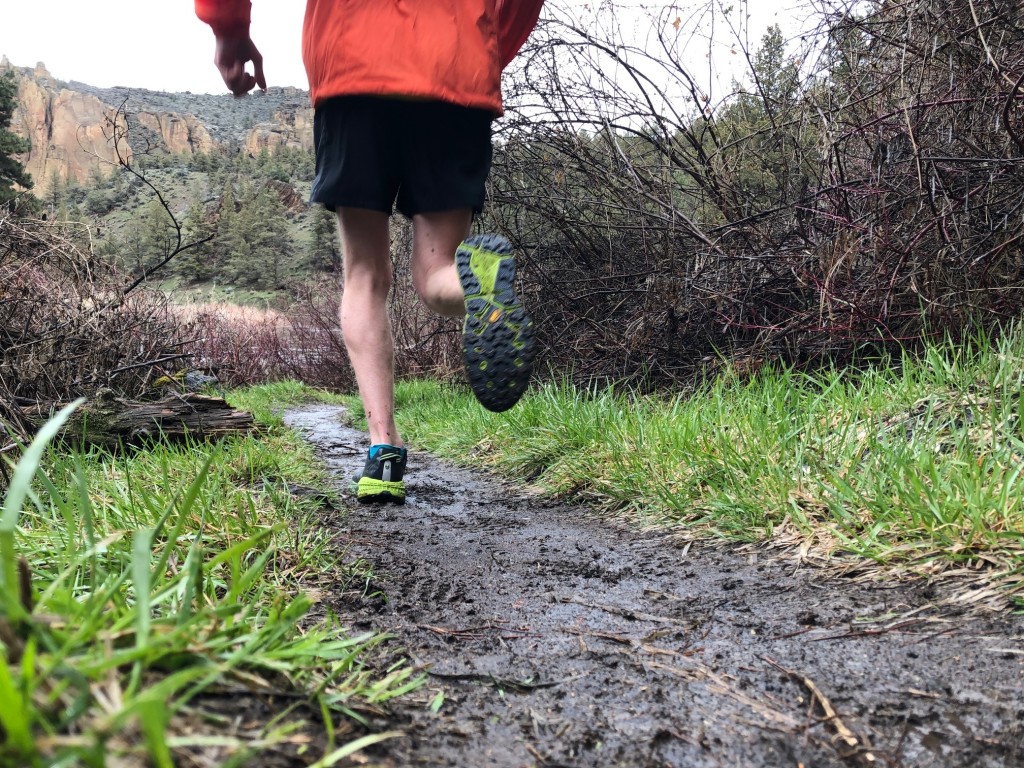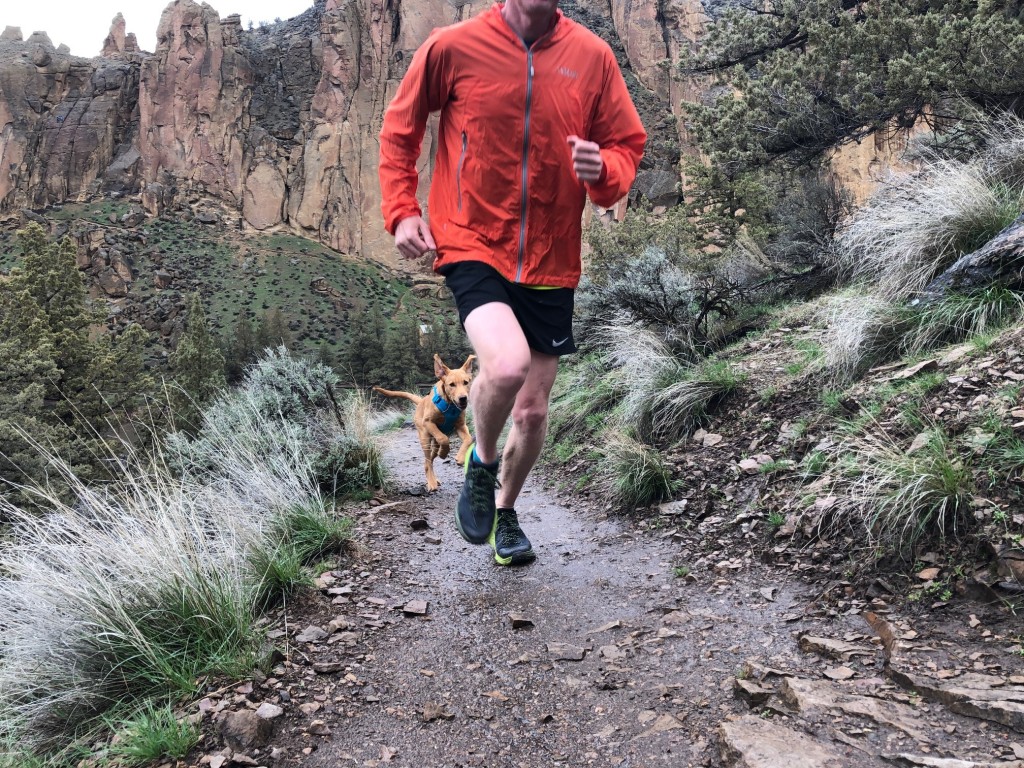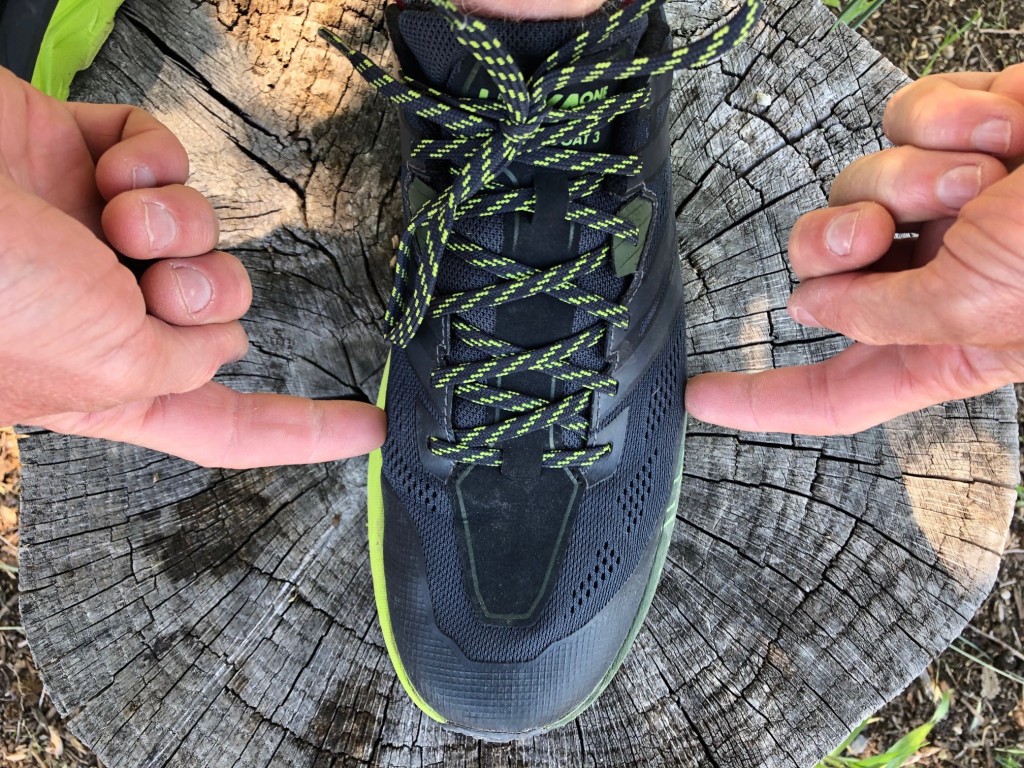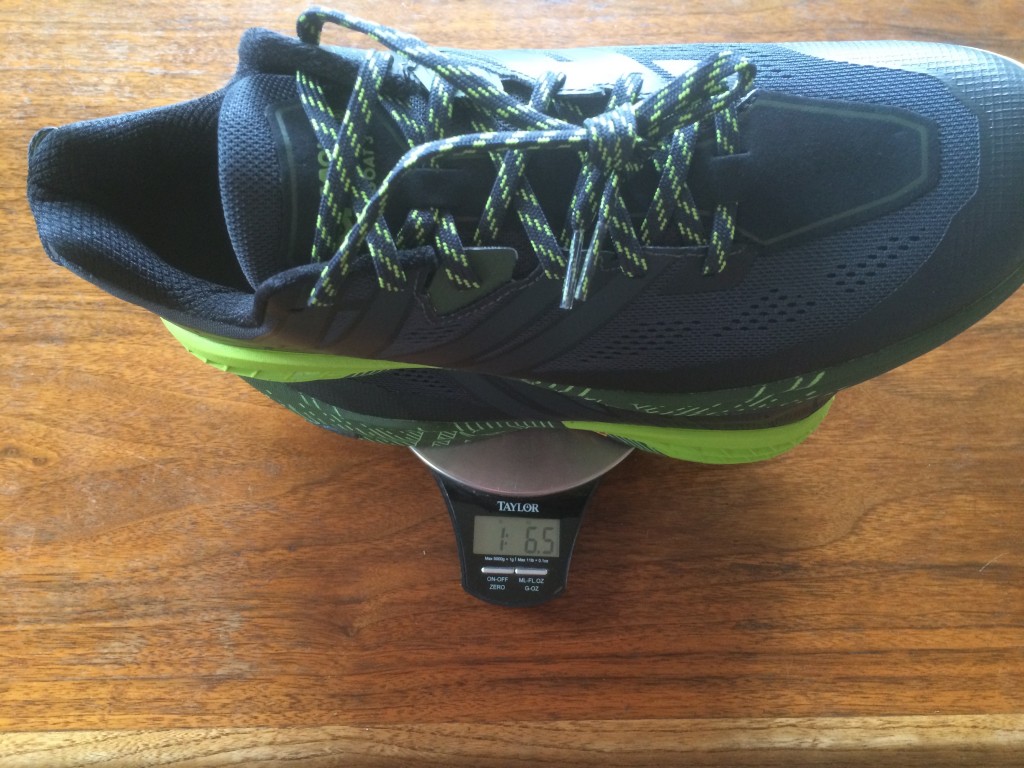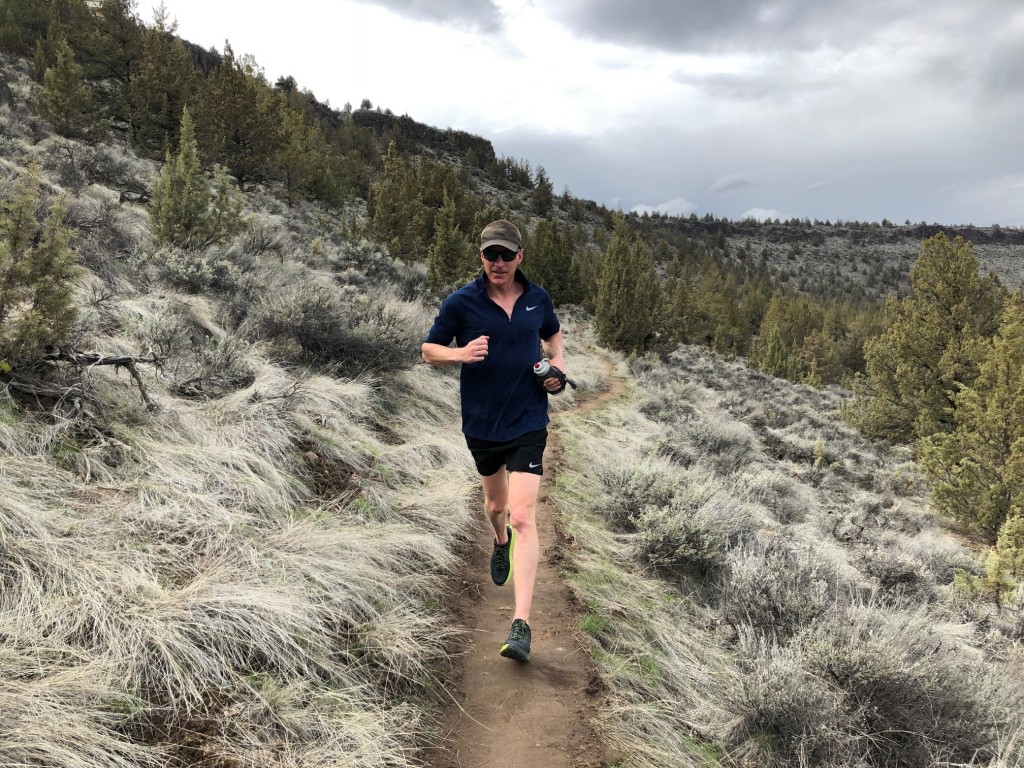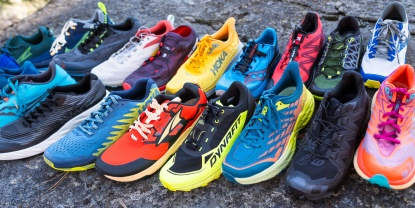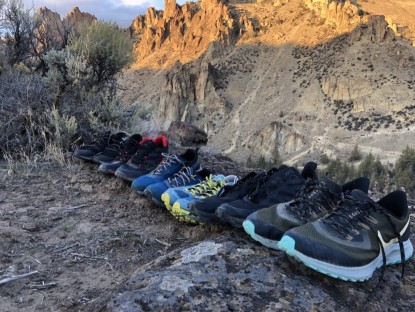Hoka Speedgoat 3 Review
Our Verdict
Our Analysis and Test Results
Hands-On Review of the Speedgoat 3
For runners who appreciate the maximum amount of cushioning beneath their feet, the Hoka Speedgoat 3 will more than meet your expectations. It fits and feels much like many other Hoka shoes, but features aggressive 5mm deep sticky rubber lugs that make it an ideal choice for difficult trails but reduce its crossover potential onto roads. Compared to the Speedgoat 2, the predecessor, very little has changed. The midsole and outsole traction remain pretty much identical to what they were, while the upper is changed slightly.
Hoka claims this shoe now fits a bit wider in the toe box while locking the midfoot down tightly. We would agree that the upper holds the foot securely in place and that it fits perhaps a hair wider in the forefoot, however, we still feel like our toes are a bit squished in the front, that the design is long and narrow, especially further toward the front. While some online reviewers have claimed that the shoe has gotten heavier in this revision, we actually weighed our pair at 0.7 ounces lighter than the old ones, a positive step for what was a bit of a heavy shoe.
Compared to the Hoka Challenger ATR 5, which we still choose to recommend as the Top Choice for Maximum Cushioning, the differences are slight and subtle. The fit is similar in the forefoot, that is, narrower than average, but the toe box is a bit more rounded off in the Challenger ATR and is shaped a little bit more like our toes. The Speedgoat has more aggressive traction, although the newer traction on the Challenger ATR is much improved. The Challenger ATR weighs a bit less, costs a bit less, drains water slightly better and comes in a wide version, thereby appealing more to people with feet that don't run on the narrow side. While both of these are excellent shoes, the reasons stated above are why we still prefer the Challenger ATR.
Foot Protection
When it comes to underfoot protection, it is hard to beat the 32mm of EVA foam found in the Speedgoat 3. The midsole is made of a single density foam, with no rock plate sandwiched inside, so gives a consistent, springy, heavily cushioned feel from front to back. This feel is exactly what Hoka runners have come to love, and not only prevents nearly any impact from reaching the sole of the foot, but also absorbs some of the impact from the running stride itself. It gives a little bit of a springy rebound upon landing as well and feels pretty much identical to the midsole of the Challenger ATR 5.
The upper, while sporting a new pattern of TPU film overlays designed to protect against blowout in the high wear areas on the sides of the forefoot, is merely average when it comes to protection. There is a bendable but moderately protective toe bumper, which is not as firm or hard as the one found on the Scarpa Spin Ultra. We also found the dual-layered mesh of the Challenger ATR 5 to be a bit more durable over the long haul.
Traction
The traction on this shoe is by and large excellent. It is made of a Vibram Megagrip compound, present in some form or another on a number of trail running shoes, and which we have found to be consistently sticky on dry and wet rock, and relatively durable over time. On the sole are found lots of multi-directional lugs well spaced apart which are 5mm deep.
These lugs grip well to loose and slippery surfaces like mud and snow and also do a great job of providing traction on steep dirt. While they do impressively well, the gold standard for traction remains the Salomon Speedcross 5, so check those out if traction is your primary desire.
Stability
There is no question that the massive stack height of springy foam underfoot affects the stability of these shoes. At the same time, we recognize that while they may feel a bit high and tippy initially, humans easily adapt to whatever they repeatedly subject their bodies to, and the distance between foot and ground while wearing Hokas is no exception. Despite the high stack underfoot, these shoes have a relatively low 4mm heel-toe drop and do a good job of keeping the foot locked securely in place. We experienced virtually no slippage of our foot while side-hilling or running up and down steep hills. Low to the ground, low heel-toe drop shoes like the Nike Terra Kiger 5 and the Altra Superior 4 are still the most stable, however.
Comfort
These are comfortable shoes. Like many Hokas we have worn in the past, we feel that they fit true to size, with a slightly narrower than average toe box, but a wider and more spacious heel. While we feel that the plethora of internet complaints about the narrow fit are perhaps a bit overblown, we will admit that this shoe isn't as wide as the Nike Wildhorse 5, and doesn't allow the same expanding forefoot splay as the Altra Lone Peak 4.
Hoka seems to be listening to their customers and is now making some models in wide EE versions, so check out the Challenger ATR 5 if you want something a bit more spacious in the toe box. The rest of the upper is comfortable, breathable, and with no rubbing or chafing points.
Weight
Our pair of men's size 11 shoes weighs 22.5 ounces. We found this to be almost an ounce lighter than the previous version but is still about an ounce heavier than the comparably sized Challenger. Considering how large these shoes are, they are impressively light and don't feel overly heavy when running in them.
Sensitivity
This is not a very sensitive shoe. With so much foam underfoot, most of the feel of what you are landing on is absorbed before it hits your foot, which is one of the primary reasons people like these shoes so much. There is no rock plate in the midsole of this shoe, so it remains fairly flexible, and when cruising over very rough terrain, like balancing through a talus field, for instance, some sensation is still felt. They don't have a very firm, dissociative feel, like one finds in the Salomon S/Lab Ultra 2, but never-the-less, those who prize trail feel should stick to a more sensitive option.
Best Applications
Maximally cushioned shoes such as the Speedgoat 3 are optimal for ultra runners looking to reduce stresses on the body. They are probably the most common type of shoe worn at ultra races. They can also be helpful for older runners, those recovering from an overuse injury, or anyone who feels that less impact while running would be helpful for them. A surprising amount of people who work on their feet all day enjoy wearing Hokas. However, the Speedgoats, in particular, are optimized for trail running and will be best used for that purpose.
Value
These shoes retail for $140, which is pretty expensive for a trail running shoe, although more and more shoes are being released with a price point in this realm. We feel they are relatively long-lasting, so could be a good value, but also prefer the Challenger ATR 5, which come for $10 less, so recommend those if value is the top concern.
Conclusion
The Hoka Speedgoat 3 are only minimally updated, choosing to build upon the characteristics that people love and have come to expect: solid traction and maximal cushioning. They offer a secure fit that is still a bit narrow compared to the rest of the trail running shoe market.


